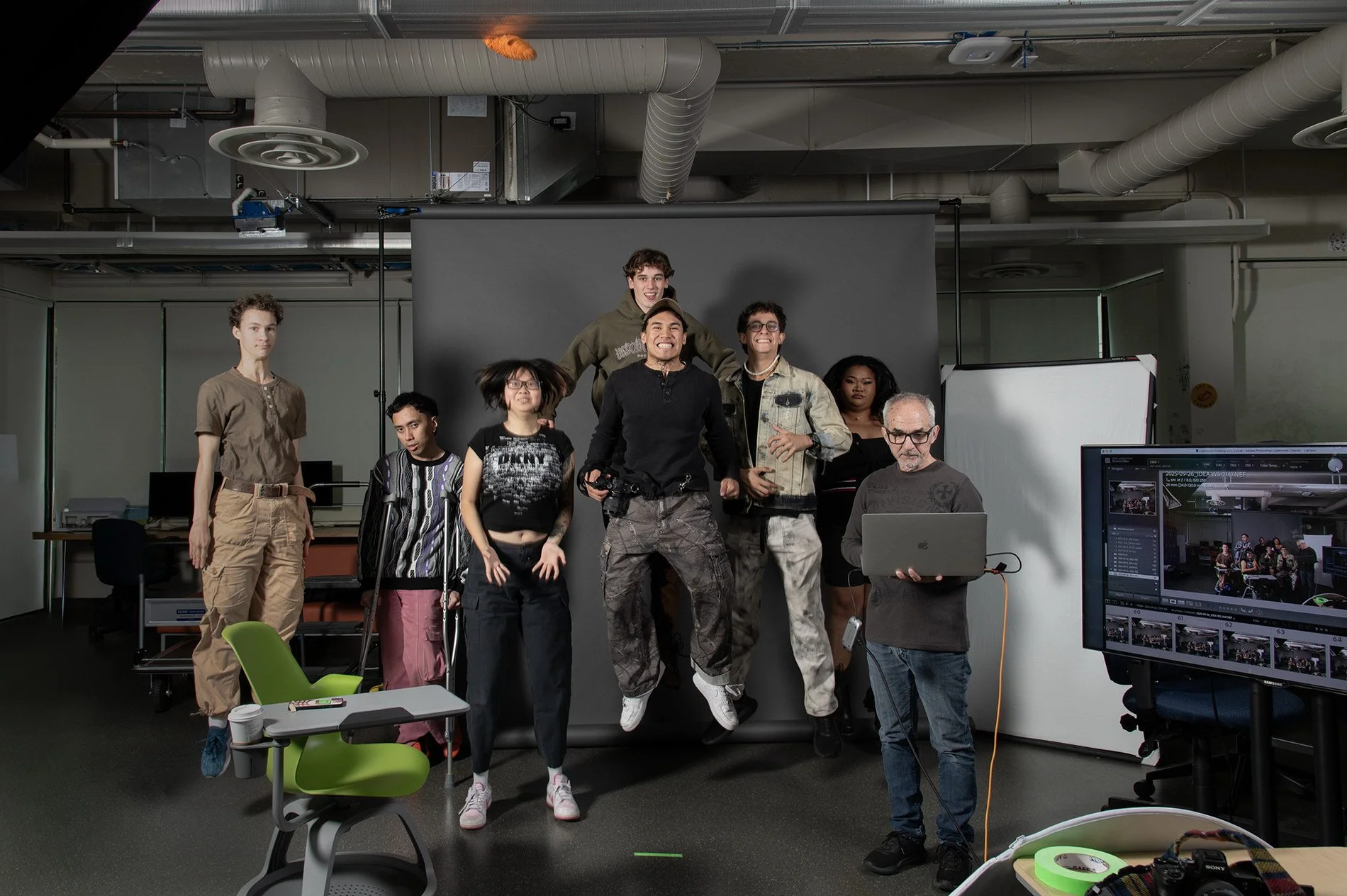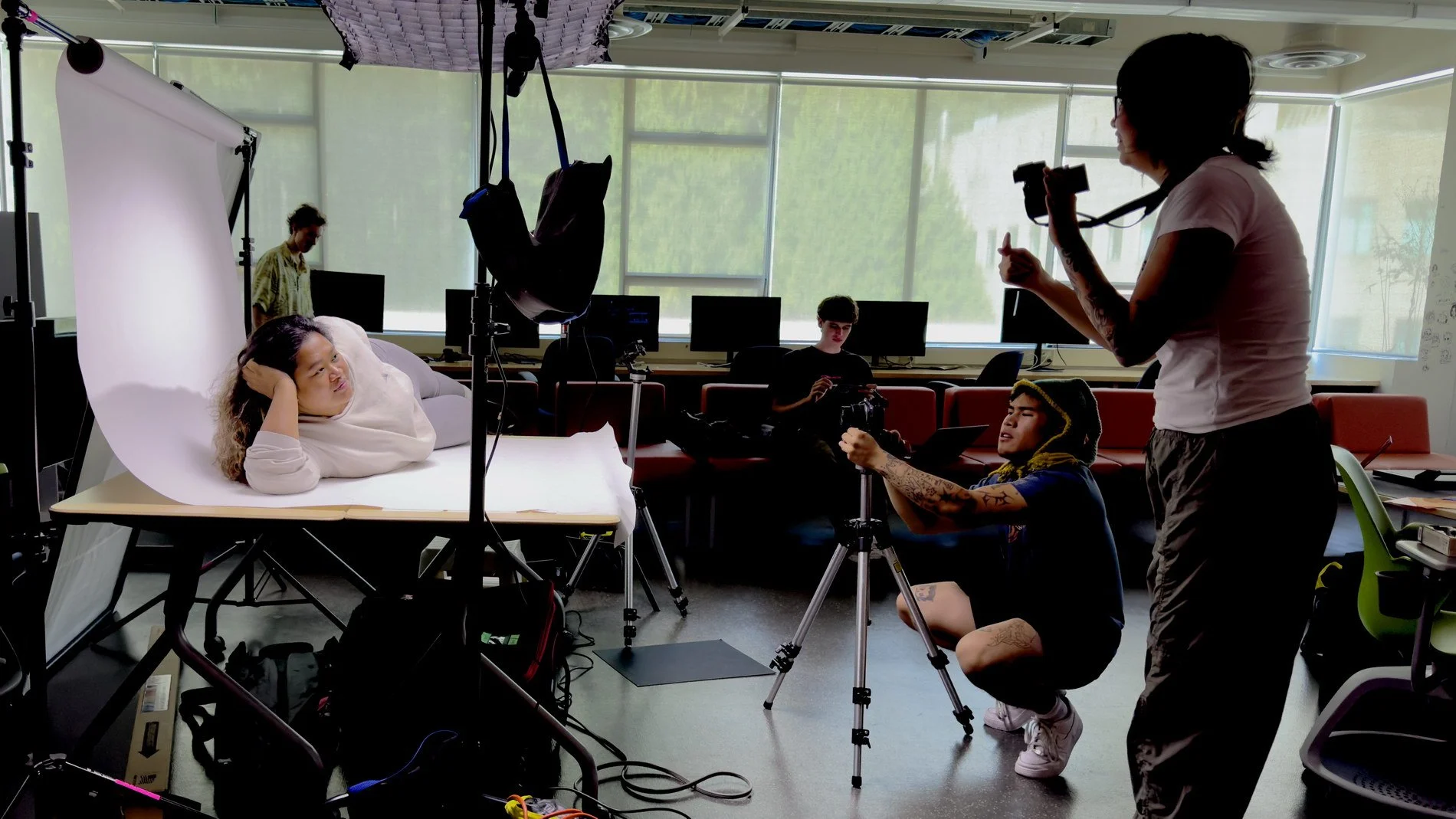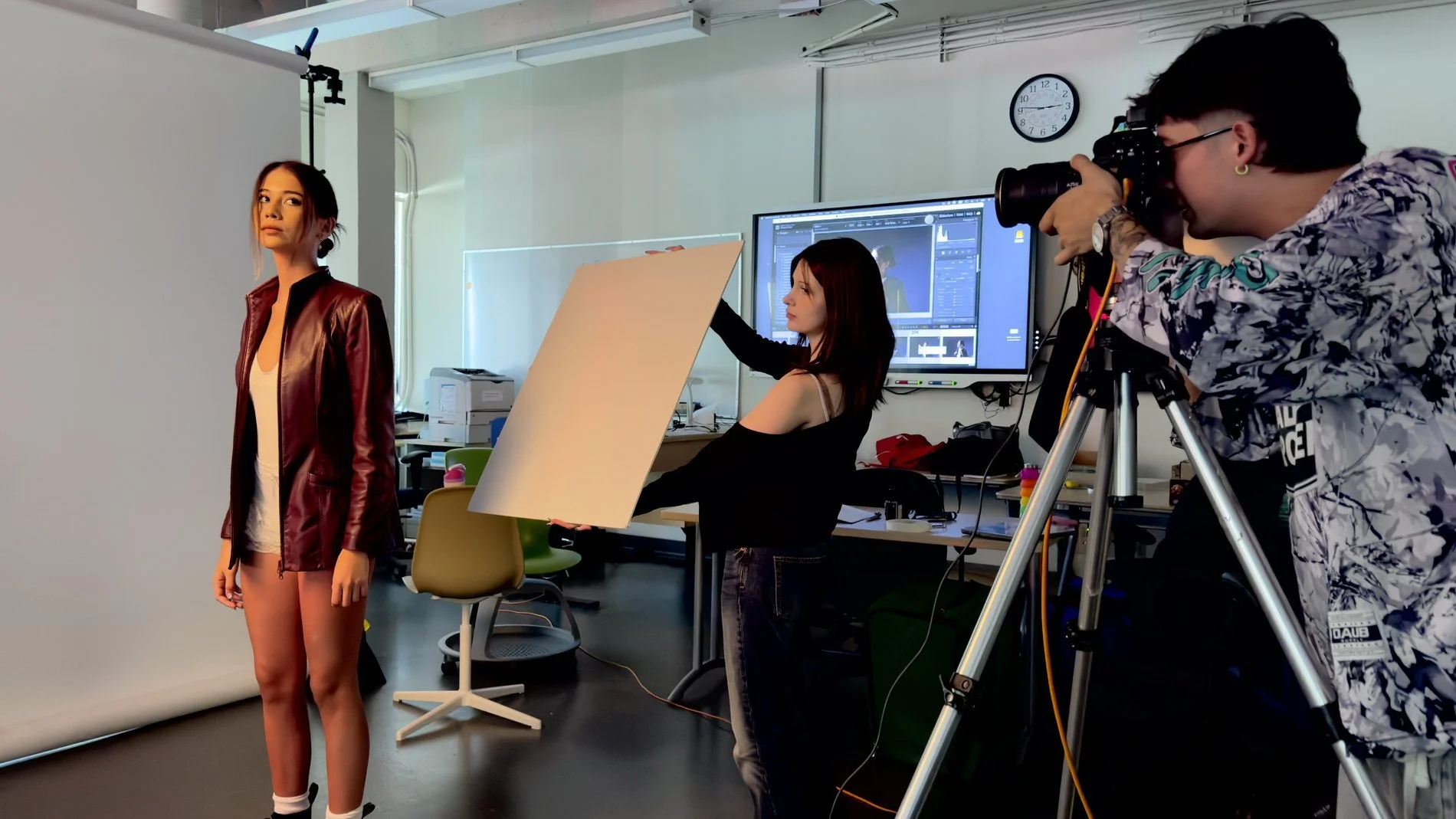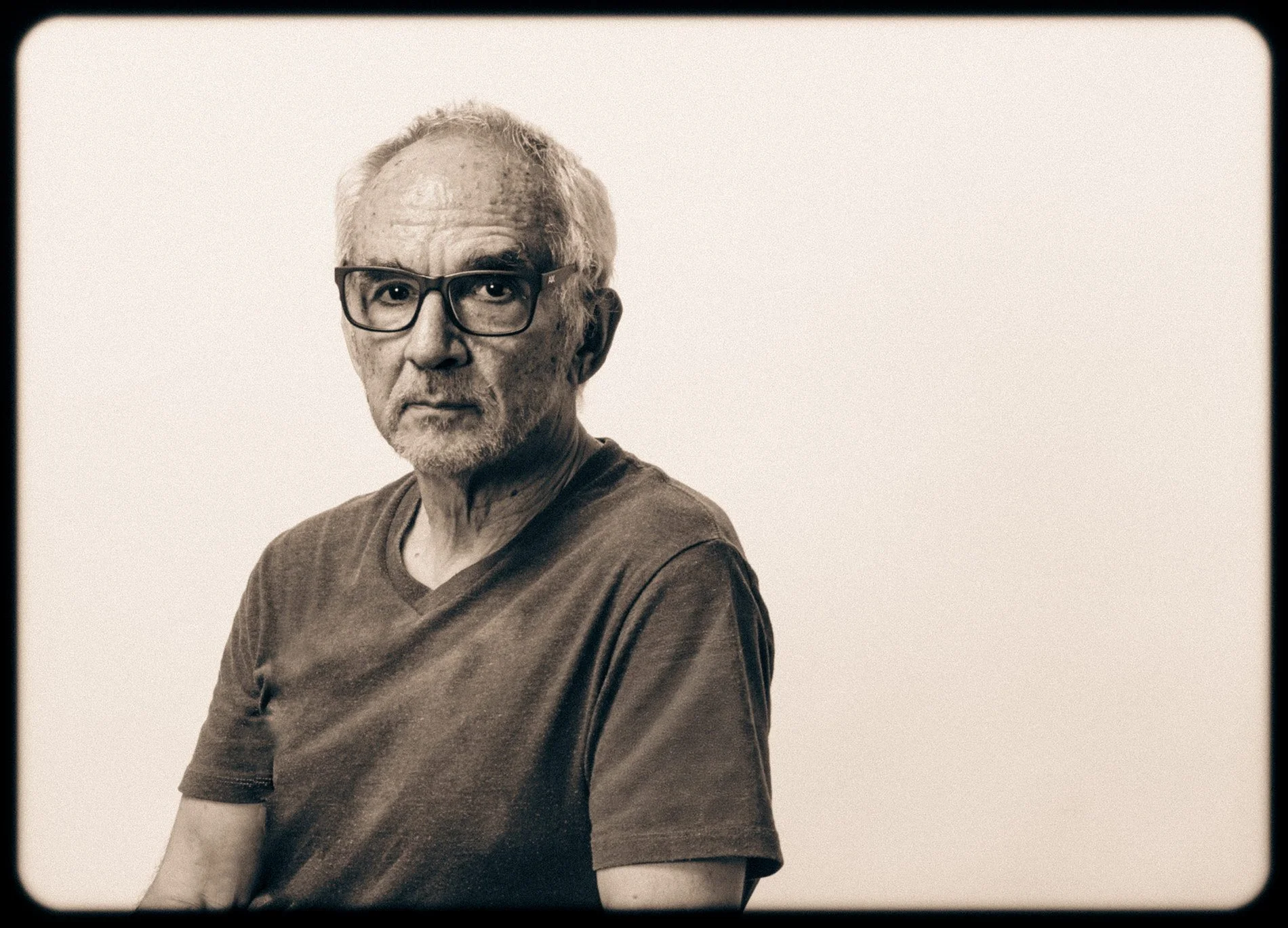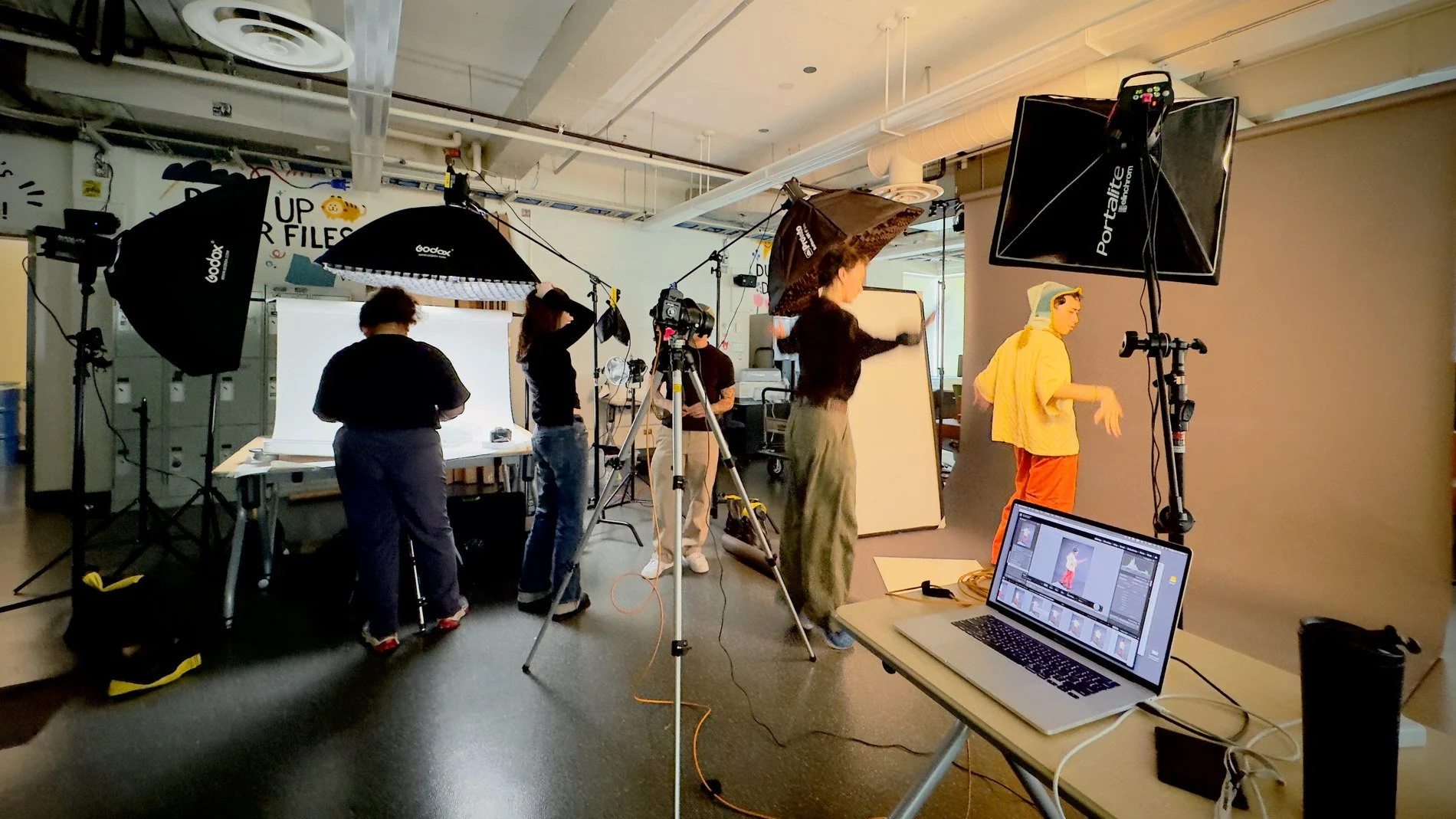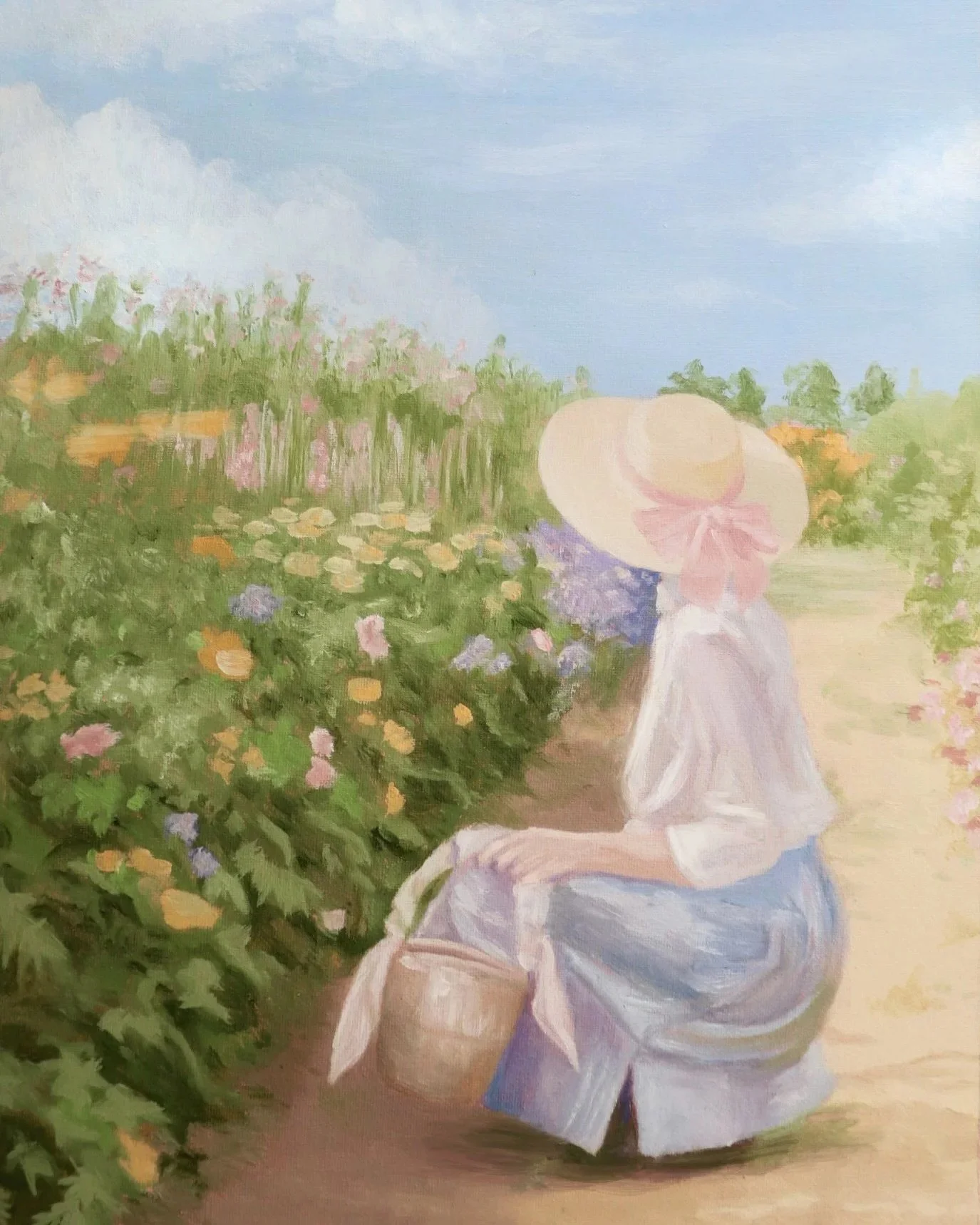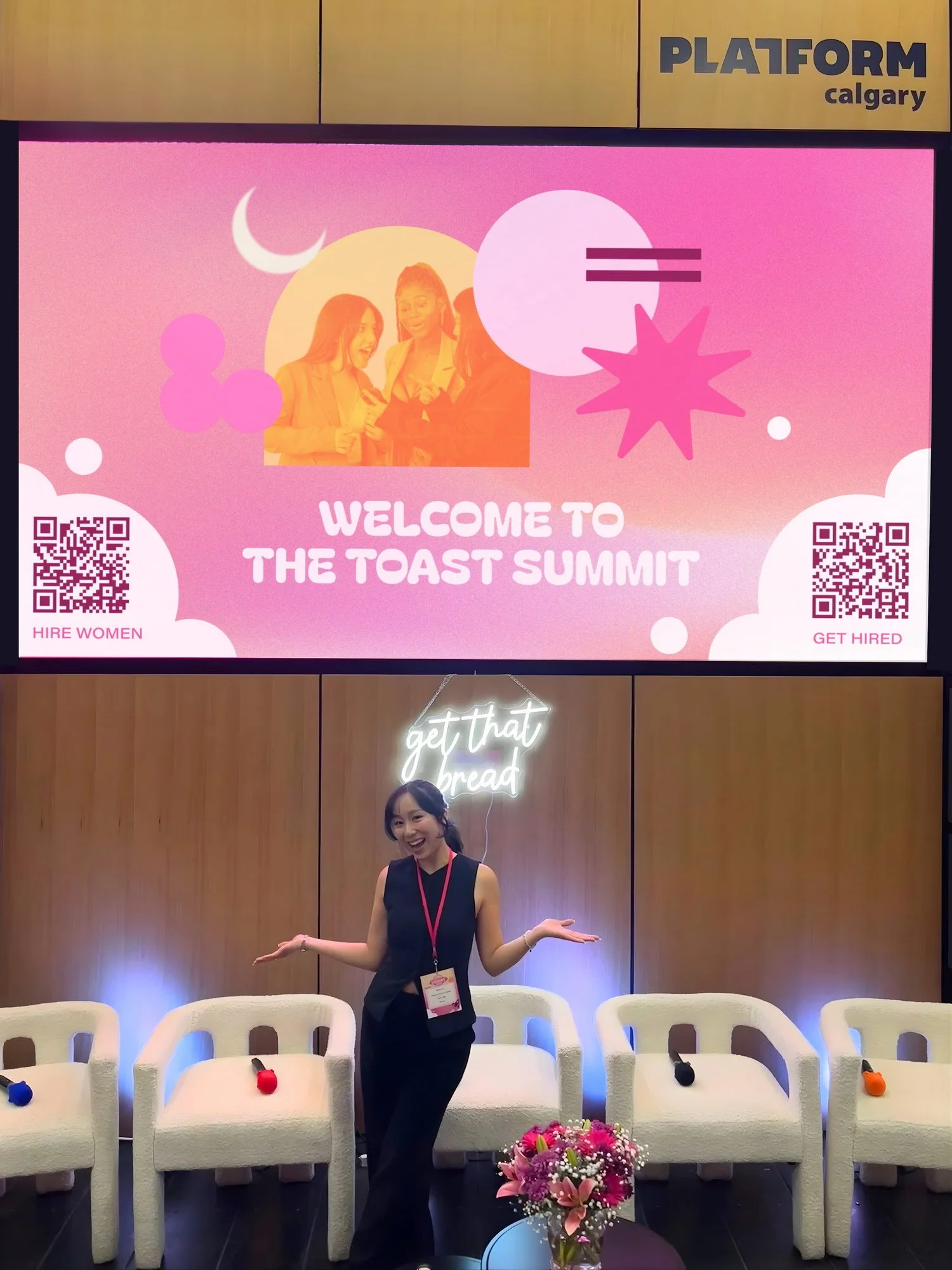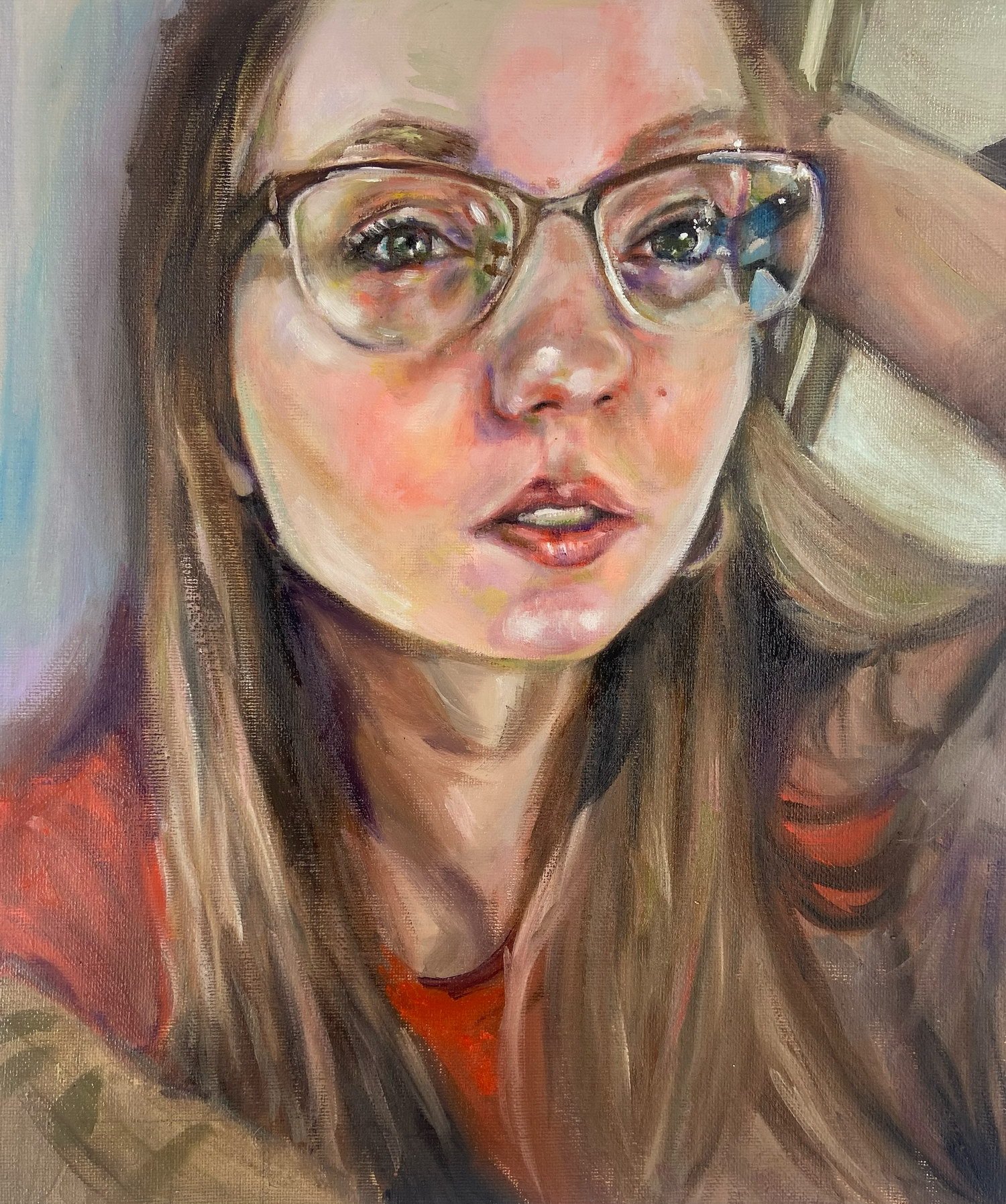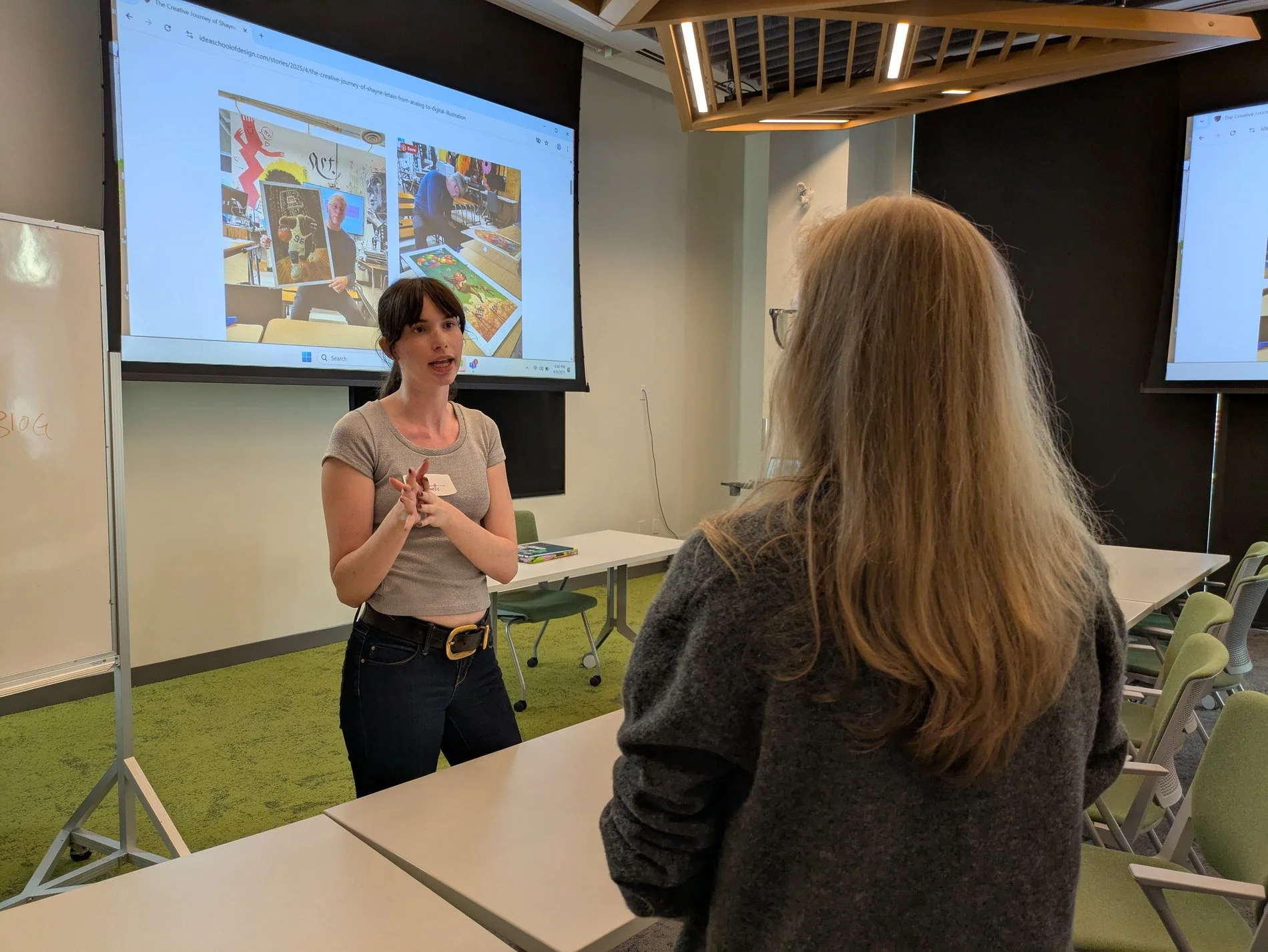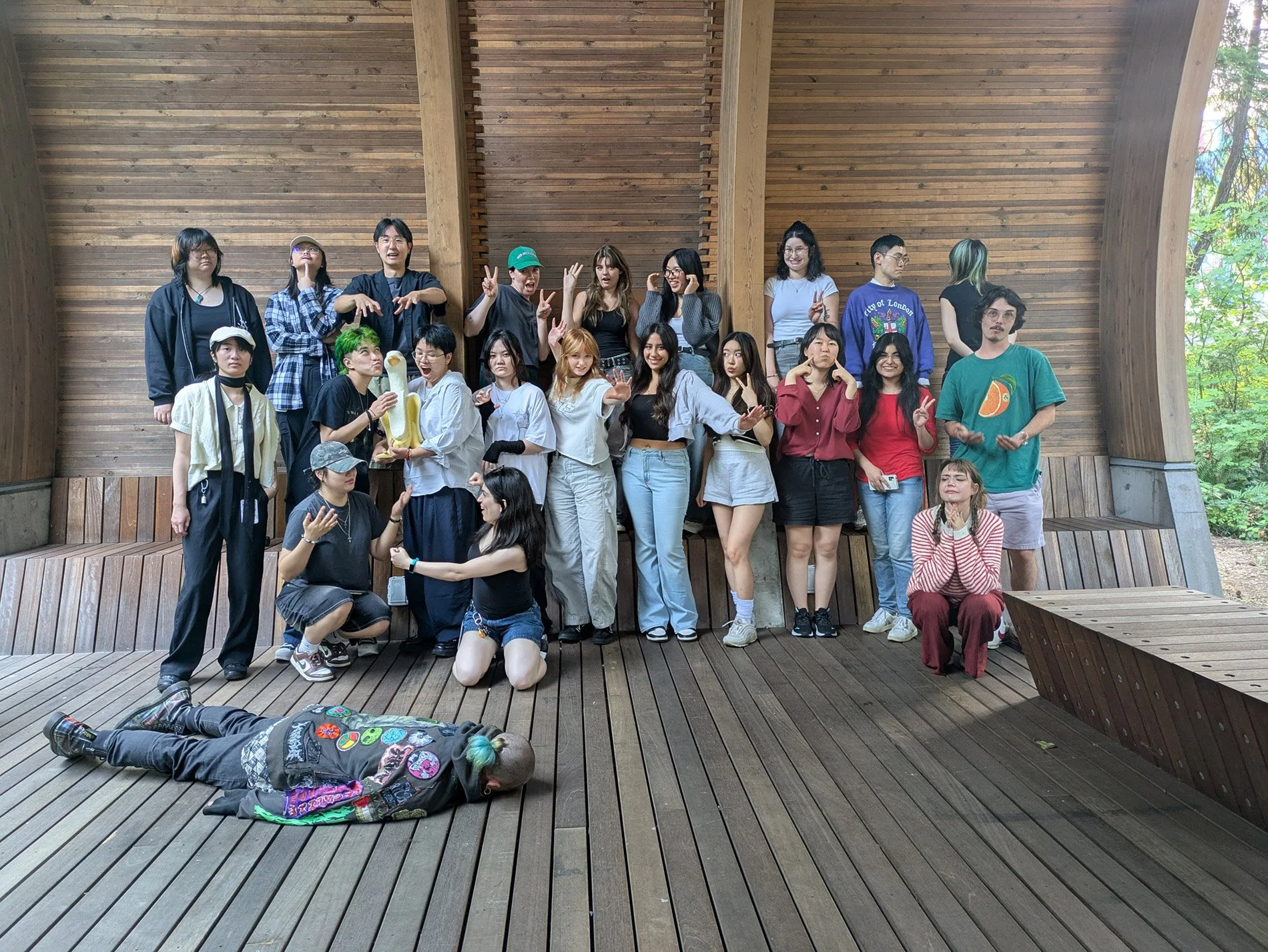Capturing Motion, Building Skills: A Look Inside Our Studio Photography Workshop
Students in the Studio Photography workshop are learning the elements of studio lighting for people and product. Photo by Rick Etkin.
Every year, a burst of energy and laughter marks the finale of Rick Etkin’s Studio Photography workshop. The assignment? To capture a group in motion. The result? The now-classic photo of leaping, smiling students against a backdrop of professional gear—a single moment that encapsulates the hands-on, dynamic learning that defines our Bachelor of Design program.
This exercise is more than just a fun photo op. It’s a practical application of the workshop’s core lessons. But according to instructor Rick Etkin, these technical skills are just the beginning. “The workshop gives the students a way to understand the importance of naming files both for themselves and for clients,” he says, emphasizing the professional practices baked into the curriculum. The real value lies in the rare, hands-on experience. “Almost every student expresses the wish that it could be a longer course,” Etkin notes. “I do explain to them that 4 weeks barely scratches the surface, and you can easily take 2 and 4-year courses to learn how it all really works.”
Over four intensive days, students dive deep into the world of professional studio practice. The workshop is meticulously structured, moving from DSLR basics and RAW format on day one to lighting for shape and style, and finally to producing real-world assignments that incorporate both tabletop product shots and live models. Students don’t just learn to take pictures; they learn to document their workflow for consistency and to direct talent in front of the camera.
The goal is to build a repeatable, professional process. “I cover the importance of documenting the work as they shoot so that there is a consistent workflow that can be repeated,” Etkin explains. He pushes students to see light like a professional, understanding “how different surfaces—lustre, smooth, glassy, light and dark—require different kinds of lighting.” Using a full set of LED and strobe lighting kits with a wide range of modifiers, students learn the basics of lighting. The ultimate success, Etkin says, is that “they gain the skill for post-graduation, to understand and communicate with photographers to get the results they need for photo shoots.”
“This workshop is a prime example of our program’s commitment to practical, industry-relevant, and integrated design education. It sits at the intersection of several core philosophies that define the Bachelor of Design experience.”
A Spectrum of Analog and Digital Craft
We believe in bridging the gap between the handmade and the digital. From the tactile processes of Lino Printing and Hand Drawn Lettering to the digital realms of Blender Animation and Portfolio Coding, our students develop a fluency in all tools of the trade. The Studio Photography workshop fits perfectly here, connecting the physical control of light and cameras with the digital power of RAW post-processing. This ensures our graduates’ work is rooted in authentic craft, no matter the medium.
Studio Photography Workshop: directing a model during a shoot
Strategic Thinking, Not Just Software
Many of our workshops are built around real-world problems. Menu Design, 360 Campaign, and Content Strategy teach you to frame design challenges within business objectives like boosting customer satisfaction or building a brand world. This approach develops graduates who are more than visual stylists; they are strategic partners who can connect design with outcomes. Learning studio photography isn’t just about operating a camera; it’s about understanding how to create imagery that serves a larger communication goal, a skill that makes them valuable in any creative industry.
Studio Photography Workshop: directing a model during a shoot
Concentrations with Purpose and Flexibility
Our four concentrations—Illustration, Branding, Interactive, and Interdisciplinary—provide structured depth while honouring creative exploration. A student in the Branding concentration might take this studio skillset to create compelling product shots for a packaging project. An Interactive student could use it to photograph original assets for a website. The Interdisciplinary concentration allows students to combine workshops like this with, for instance, Content Strategy or Mural Illustration, creating a unique, hybrid expertise. This balance of guided specialization and open exploration ensures every student can find a direction that fits the evolving design industry.
Learning from Practicing Experts
Studio Photography instructor Rick Etkin. Photo by Lia Grigorian.
Our workshops are led by professionals like Rick Etkin who are active in the field. They bring current industry practices, real-world challenges, and invaluable networks directly into the classroom. Students learn not just design theory, but how ideas take shape in real projects and professional contexts. You’re not just learning theory; you’re learning the trade from those who are shaping it right now.
Studio Photography Workshop: students working in the professional studio environment
The jumping photo is a snapshot of a specific cohort in a specific workshop, but the energy it captures is universal here. It’s the energy of mastering a new skill, of collaborative creation, and of building a portfolio that is as diverse and dynamic as the field of design itself. It’s the energy of students who have moved from basics to confidently directing models and troubleshooting lighting for different surfaces, equipped with a foundational workflow they can carry into their careers.
Our workshop model reveals a program that is intentionally flexible, deeply practical, and strategically minded. We trust students to chart their own creative path within a structure that provides both foundational craft and the freedom to innovate. Graduates leave not only with a standout portfolio but with the adaptable skills to thrive in a dynamic creative career.
Explore Your Creative Future
The journey to finding your unique design voice starts with exploration. The workshops featured here are just a glimpse into the hands-on learning that defines our Bachelor of Design program.
Dive deeper into the student experience, see more stunning work, and discover the possibilities that await you right here on our blog.

